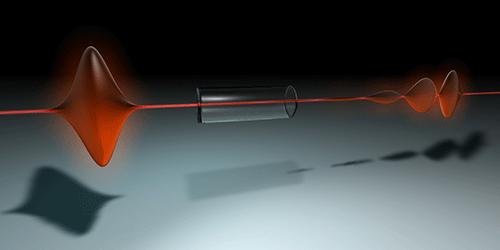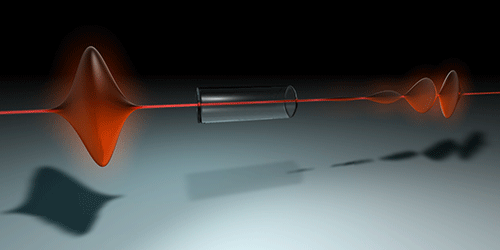A Short but Strong Encounter
Photons interact weakly with each other and with the channels they travel through. This weak coupling is a double-edged sword for quantum information technologies: it makes single photons good carriers of information but poor media to process and store it. One solution is a hybrid photon-atom approach, in which atoms are used for the processing and storage of quantum information, and photons are used to transmit it. But this approach requires a strong photon-atom interaction to enable the exchange of information between the two. Marco Bellini from the National Institute of Optics, Italy, and colleagues show that single-photon pulses that are both ultrashort and broadband may provide a way to achieve such an interaction.
Strong photon-atom coupling is thought to require narrowband photons whose frequency matches that of the atom’s electron transitions. Bellini and co-workers demonstrate that this need not be the case. Using an enhanced version of homodyne detection—a method used to analyze optical signals—the researchers measured the properties of a broadband single-photon optical pulse after it traveled through an atomic medium with a bandwidth much narrower than the pulse’s bandwidth. They found that the medium strongly modified the pulse’s temporal shape, creating positive and negative lobes that make the pulse’s area zero. Such a zero-area pulse—never before observed for single photons—is a clear sign that a strong interaction occurred between the photons and the atoms. This interaction could, for example, be used to map the quantum state of a photon onto the collective state of multiple atoms.
This research is published in Physical Review Letters.
–Ana Lopes





